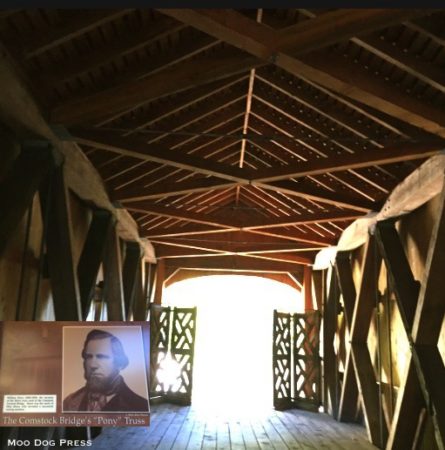Life by Design: Hunt, Connect. Ring The Bell, Inventors & Entrepreneurs
The Chatham Historical Society is a showcase array of designs and objects – because someone thought them up, then figured out a way to bring each into reality. Three buildings and collections, Bevins bells and bell toys are exceptional. Open to the public the first Sunday of each month in season; call Sandy Doran, president, (860) 267-8953.
The instantly recognizable clang, clang, clang of the New York Stock Exchange (NYSE) is a bell. A very special bell made in Connecticut – not by Bevins but by the G. S. Edwards Company of Norwalk.
“When the NYSE officials explained that they wanted to purchase a new bell, measuring 18 inches in diameter and matching the old, representatives of the Edwards Company were astonished. It seems that neither Edwards nor any other company, makes bells anywhere near that large — or loud — today' according to the history of the bell on the NYSE official site.
“Edwards agreed to make a new bell from scratch, bringing former employees out of retirement to handle the job. Sound measurements were taken, and the tone of the bell was matched to the NYSE’s existing bells.”
The tradition started with a Chinese gong, then an electrified bell, today the trademarked NYSE logo includes two words -“Ring True” – it's a sound associated with free enterprise.
So what is the reason for the name Chatham in a place most know as East Hampton?
“In 1767, the community was separated from Middletown incorporated by the Connecticut General Assembly as the township of Chatham, named after Chatham in England, due to the important shipbuilding industries that both places had in common. An iron forge at the outlet of Lake Pocotopaug was one of the earliest in the state. The forge supplied the local needs and the shipbuilding industry on the banks of the Connecticut River…” – Wikipedia

A load-bearing marvel – the Comstock Bridge ‘Pony' Truss and William Howe who was awarded a patent for his bridge design.
Blacksmiths solve problems by applying fire and pressure to metal. Using wood to cross a river can be seen in the nearby Comstock Bridge built in 1791. This covered bridge spans the Salmon River and originally was the way to travel from East Hampton to Colchester – or the reverse. Nowadays, it is a scenic attraction and can be toured on foot. There is a small parking area and informational board about the inventor and design of the bridge. There are also blue-blazed trails nearby – but that is another story.
As bridge historian Eric DeLony wrote, “The Howe truss may be the closest that wooden-bridge design ever came to perfection. For simplicity of construction, rapidity of erection, and ease of replacing parts, it stands without rival” (DeLony 1994:11). http://www.tn.gov/tdot/article/bridges-historybridges#sthash.I35YS6YB.dpuf
Editor's note: This is an excerpt from a more extensive story now offline as a book is in progress about the history and innovation of the region.


